[
Return to Main Page ] [
Return to Projects Index
] [
Doc's Machine & TWB Store] [
Contact Us ]
[
The Whiteboard Webcomic
]
Converting a Grizzly G8689 Mini Mill to 3-axis CNC, Part 8:
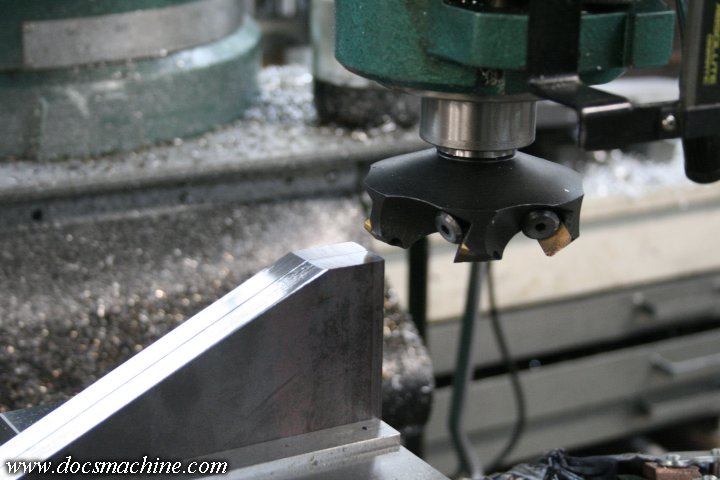
Now for the tricky bit: The cut-off pieces were milled to shape...
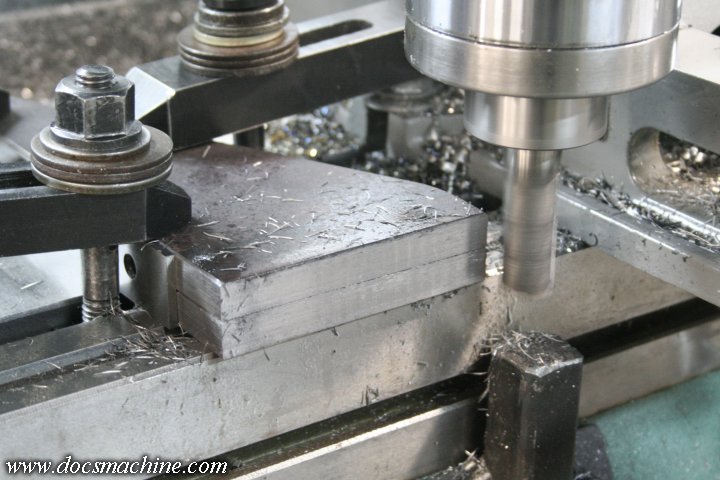
Milled square....
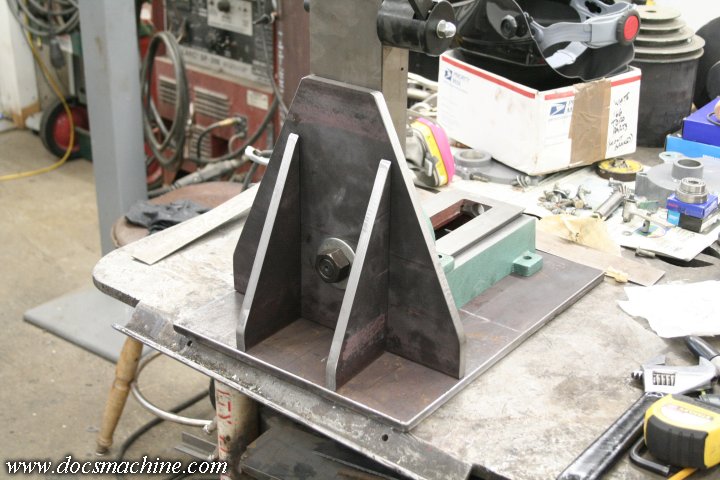
And test-fitted as well. You can see how that adds a large and reinforced structure to the pivot,
as well as solidly connecting
the base to the column. There WILL be
some issues- when it comes time to properly "tram" the mill, I expect it
to be
time consuming and cause a great deal of frustration, as it'll
basically require a lot of bolting and unbolting to
add and subtract a
lot of shims at a bunch of different points.
But, I believe, once properly shimmed to within at least a few thou of
true and square, it will also, I think,
be a very great deal more rigid
than it originally was, and produce a lot less vibration and chatter.
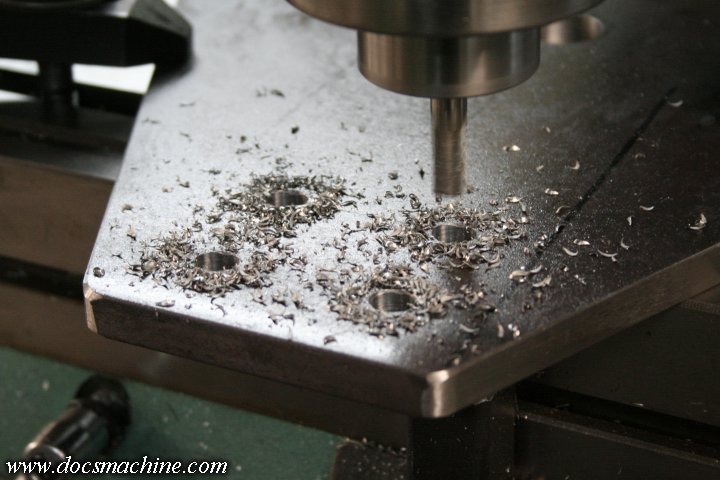
Anyway, now that I had it set up, I was able to mark and measure out a
likely spot for a set of attachment points to
bolt the column to the
back support. These got drilled and then milled slightly wider on each
slide, to form a slight slot,
allowing for the column to be tilted
slightly left or right in order to bring it into perfect tram.
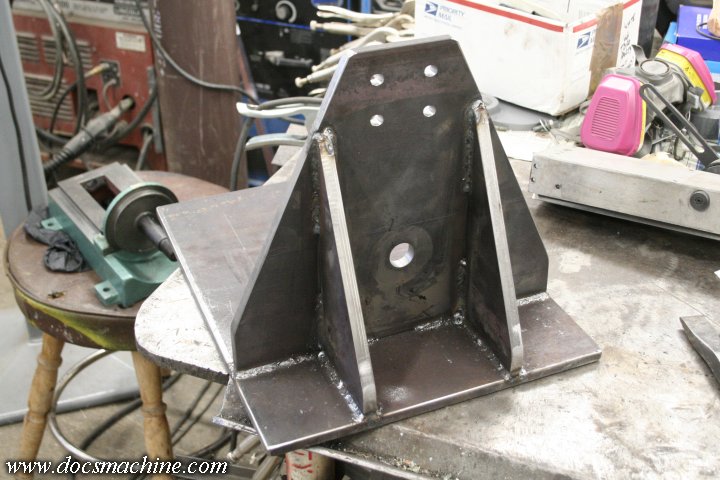
With some care and a couple of squares, and some patience to not
overheat the piece,
I welded everything fairly solidly with the big Lincoln MIG.
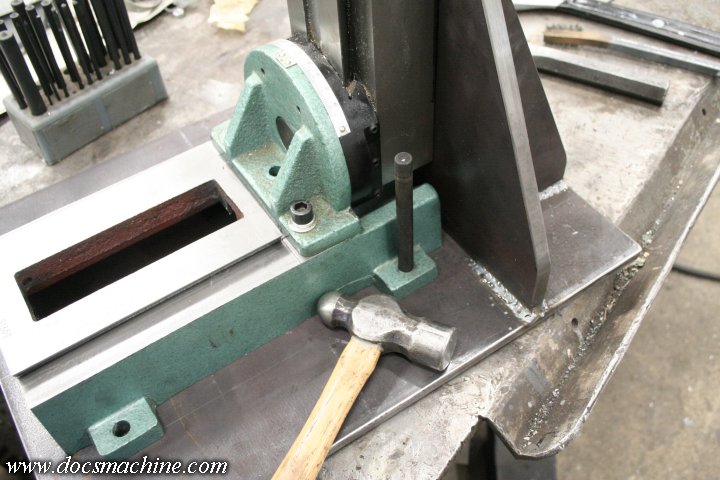
I wished I could have drilled the base bolts before welding the back support on, but until it was nailed down, I didn't know
where to drill 'em. But, now I could bolt the column in place, and use a transfer punch to mark the holes.
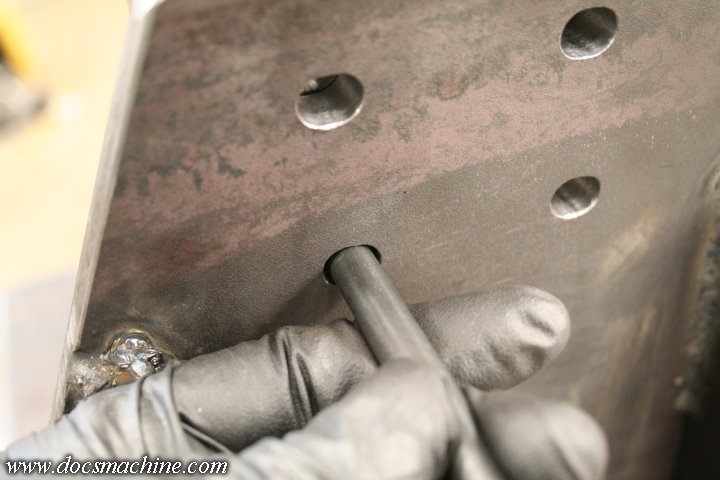
While I was at it, I carefully marked the column holes as well, remembering to punch in the center of the short slots.
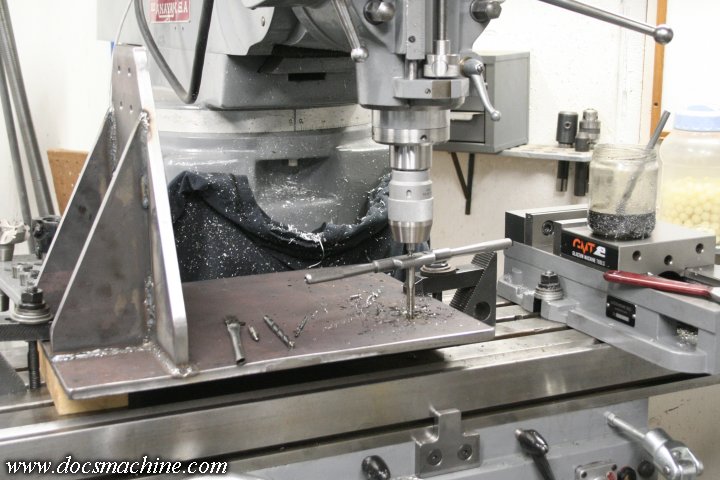
Drill and tap...
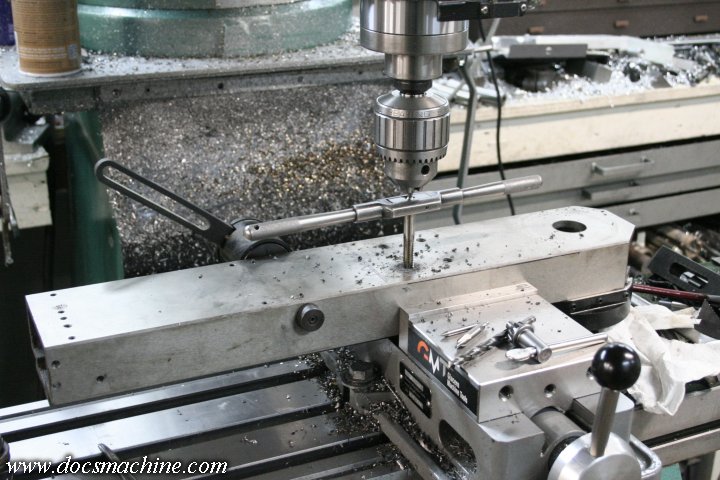
And then drill and tap some more.
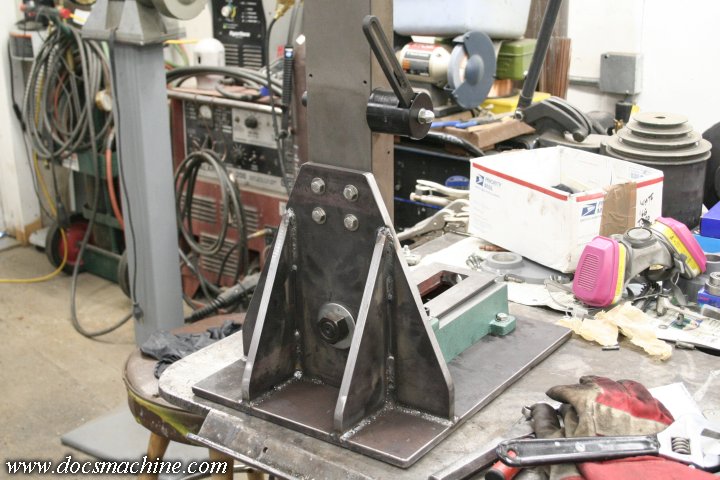
And assembled! I know it's just subjective at the moment, but the whole assembly feels considerably more
rigid, and the new
steel frame is nearly sixty pounds, not too far away
from
doubling the weight of the entire mill. The wider base
makes it more
stable and less tippy, as well, and should make a pretty
significant difference in the cut quality. (Well, within the tolerances
of the rest of the machine, especially the spindle, of course.)
All text, photos and graphics
Copyright 1998- 2019, Doc's Machine & Airsmith Services. All Rights
Reserved.
Information contained in
these pages is for reference and entertainment
purposes only. Our methods are not always the best,
quickest, safest, or even the correct ones. It's up to you to know how
to use your own machines and tools.
Keep your fingers away from the spinny blades o' death and you should
be all right.


















